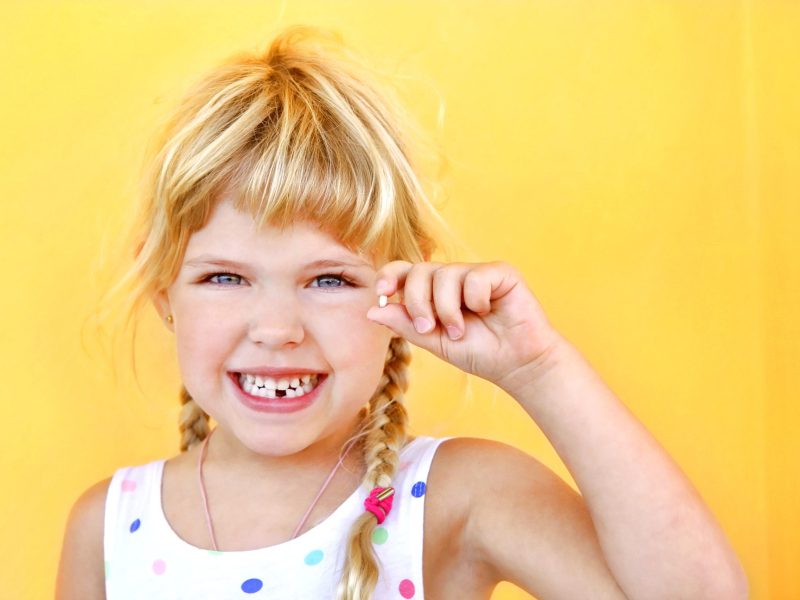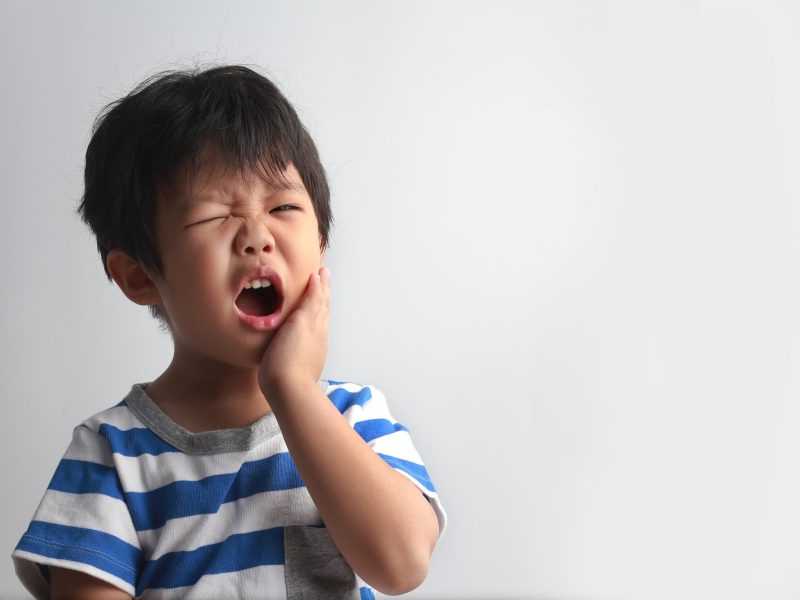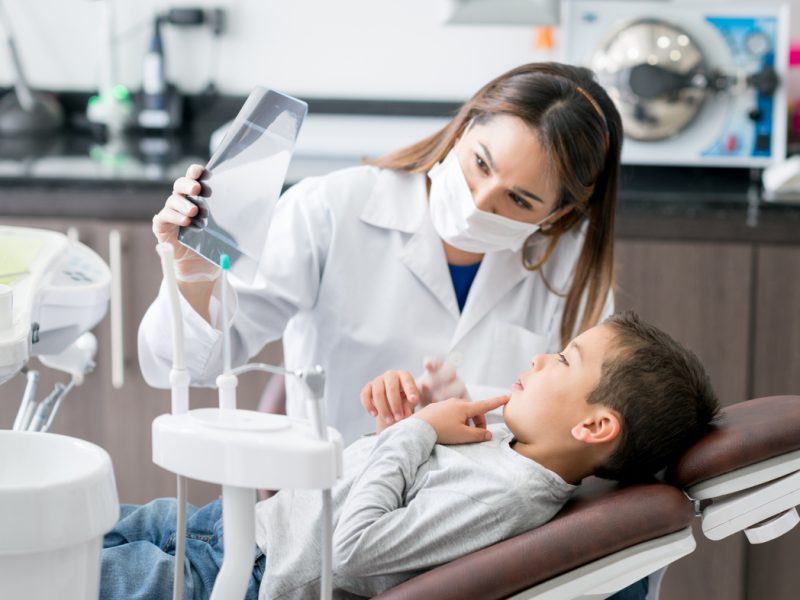Knocked Out Tooth in Children: What to Do Right Away
When a child loses a tooth unexpectedly, it can make any parent feel worried. This guide explains what to do right away, how to tell if the tooth is a baby or adult tooth, and when to get urgent help from an Emergency Dentist Brisbane.

Why Quick Action Matters
If your child’s tooth is knocked out, acting quickly is very important. The cells on the root begin to dry out within minutes, and if they die, the tooth cannot reattach properly. If you can get to a kids’ dentist within about 30 to 60 minutes, there is a good chance the tooth can be saved.
If you wait too long, those precious minutes work against you — the root dries, the gum seals, and what could have been a quick fix may become a bigger problem.
Acting quickly gives your child’s tooth the best chance to stay where it belongs.

Immediate Steps for a Primary Knocked-Out Tooth in Children
Here’s what you should do in the first few moments to keep your child comfortable and the area clean until you can see a Brisbane paediatric dentist:
- Stay calm: Your child will look to you for reassurance. Keep your voice steady and let them know everything will be okay.
- Stop the bleeding: Gently press a clean cloth or gauze on the area for a few minutes. The bleeding usually slows down quickly.
- Do not reinsert the tooth: Never put a baby tooth back in, as this can harm the adult tooth growing underneath.
- Keep the area clean: Ask your child to spit gently if there’s blood. You can offer a sip of water to rinse, but no vigorous swishing.
- Soothe the pain: A cold compress on the outside of the mouth can help reduce swelling and make your child more comfortable.
- Call your dentist: Tell them what happened and bring the tooth with you so they can check that it’s fully out and nothing is left behind.
Immediate Steps for a Permanent Knocked-Out Tooth in Children
If the tooth that’s been knocked out is a permanent (adult) one, every minute matters. Here’s what to do right away before you reach your dentist in Brisbane:
- Find the tooth: Pick it up by the white part you see when your child smiles, not the root. Touching the root can damage the delicate cells needed for reattachment.
- Rinse gently if it’s dirty: Use milk or saline, but don’t scrub or wipe the tooth. Just remove any visible dirt.
- Try to place it back in the socket: If your child is calm and old enough, gently guide the tooth back into place and ask them to bite down softly on a tissue or clean cloth to hold it.
- If you can’t put it back in: Keep the tooth moist. The best option is milk; next is your child’s saliva (have them spit into a clean container and place the tooth in it).
- Do not store it in water: Water damages the living tissue on the root and lowers the chance of saving the tooth.
- Call your dentist immediately: Let them know it’s a knocked-out permanent tooth so they can prepare for emergency treatment.

Our Treatment Options for Knocked-Out Tooth in Children
When you bring your child in after a knocked-out tooth, the treatment depends on the type of tooth, how long it’s been out, and its condition — here’s what we may do to help.
If the Tooth Is a Baby Tooth
If a baby tooth has been knocked out, we don’t reinsert it. Putting it back could damage the adult tooth growing underneath. Instead, we make sure the area is clean, check that no parts of the tooth remain in the gum, and confirm that the surrounding teeth and soft tissues are unharmed. Sometimes, we may take an X-ray to ensure the developing adult tooth is safe. If needed, we may also look at ways to keep the space open for the adult tooth to come through normally later on.
Replantation and Splinting
If the tooth is a permanent one and in good shape, we’ll gently place it back into the socket and secure it with a small splint — a thin wire or plastic support that holds the tooth still while it heals. This helps the surrounding tissues reattach and stabilises the tooth over the next few weeks.
When Root Canal Treatment May Be Needed
Sometimes, even after a successful replantation, the nerve inside the tooth doesn’t recover. In that case, a root canal treatment may be needed later to prevent infection and help the tooth stay healthy long-term.
What Happens If the Tooth Cannot Be Saved
If the tooth is too damaged, has been out too long, or isn’t suitable for replantation, we’ll look at other ways to protect your child’s smile — such as keeping the space open for the future adult tooth.
Monitoring and Follow-Up Appointments
After treatment, regular follow-ups are important to check healing, ensure the tooth stays stable, and watch for any changes in colour or movement. Your dentist will guide you on what to expect over the coming months and when to return for reviews.

Caring for the Mouth After Treatment
At-Home Care and Diet Tips
For the first few days, help your child eat soft foods — things like yoghurt, mashed vegetables, rice, or pasta. Avoid crunchy or sticky snacks that could pull or bump the tooth. Encourage them to chew on the opposite side of the mouth if possible. Keep up their usual brushing routine, but use a soft brush and move carefully around the treated area. As Dr Roya Moulavi, a dentist in Perth explains, a gentle rinse with warm salt water once or twice a day can also help the gums heal.
Signs of Infection or Complications
Call our Emergency Dentist in Brisbane if you notice new swelling, ongoing bleeding, or if your child says the tooth feels loose or painful again. A change in tooth colour, a bad taste, or a small bump on the gum can also mean it needs to be checked. It’s always better to have it looked at early. Kids often adapt quickly, but their teeth still need careful attention while they heal.
Is a Knocked-Out Tooth in Children a Dental Emergency?
A knocked-out tooth in a child can be a dental emergency, but it depends on which tooth is lost. If it’s a permanent tooth, contact a dentist right away and keep the tooth moist or put it back in the socket on the way to the clinic. Timing is critical to saving it. If it’s a baby tooth, do not put it back in, as this could harm the developing adult tooth underneath. It’s still important to have your child seen by a dentist soon, ideally within 24 hours, to check the area, clean the site, and make sure there are no other injuries.

Preventing Future Dental Injuries
No parent can stop every bump, but there are simple ways to lower the chances of a serious dental injury. Most knocked-out teeth in kids happen during play or sport, and a few small habits can make a big difference in protecting their smile.
Using Mouthguards and Protective Gear
If your child plays contact sports like football, basketball, or hockey — or even loves their skateboard or scooter — a custom-fitted mouthguard is one of the best defences against dental injuries. Store-bought ones can help, but a dentist-made guard fits better, stays in place, and allows easier breathing and talking. Helmets and face guards are also worth it for activities with a higher risk of falls or collisions. They don’t just protect teeth; they protect growing jaws and lips, too.
Safe Habits for Children
Encourage small daily habits to keep teeth safe: no running with objects in the mouth, no opening things with teeth, and no chewing on pencils or hard lollies. Remind your child to sit while eating or drinking instead of walking or playing at the same time, as many accidents often happen in those distracted moments. Regular dental visits also help your dentist spot any loose or protruding teeth that could be more at risk during play.
Support for Children with Special Needs and Dental Anxiety
Children typically feel nervous about going to the dentist, especially if it’s their first visit or they’ve had a difficult experience before, or if they have special needs. Our Brisbane paediatric dentists for special needs children use a gentle, child-focused approach, with patience and clear communication to help every child feel calm and supported from the beginning.
Managing Anxiety During Treatment
We use simple words to explain what we’re doing, show children the tools before using them, and check in often so they feel included, not surprised. Parents can stay close, and we always go at a pace that suits your child’s comfort.
Laughing Gas and Sleep Dentistry Options
For children who remain anxious or need longer or more complex treatment, we offer sedation options. Laughing gas helps them relax while staying awake and responsive, and it wears off soon after the visit. When treatment can’t be done comfortably while awake, we may use sleep dentistry in Brisbane under general anaesthesia so everything can be completed safely while your child rests.
According to Brisbane Dental Sleep Clinic, the use of Sleep Dentistry Brisbane can make dental care for children with special needs feel more manageable and less overwhelming.
You can read more about how we support children with additional needs on our page:Dr Ellie Nadian, Brisbane Special Needs Dentist for Children.

Frequently Asked Questions
What should I do first if my child knocks out a tooth?
The first thing to do is stay calm — your child will look to you to see how serious it is. Find the tooth and pick it up by the crown, not the root, so you don’t damage the tissue that helps it reattach. If it’s clean, gently rinse it with milk or saline, and try to place it back in the socket if it’s a permanent tooth. If that’s not possible, keep it moist in milk or saliva and get to a dentist straight away.
How can I tell if the knocked-out tooth is a baby tooth or a permanent one?
It can be tricky to tell in the moment, especially when there’s a bit of blood. As a general guide, baby teeth are smaller, whiter, and have short, smooth roots, while adult teeth look larger and have longer, thinner roots. Age helps too — children under about six usually still have baby teeth, while those older than six or seven may have a mix of both. If you’re unsure, don’t guess; bring the tooth with you, and your dentist can tell right away and treat it appropriately.
Should I try to put the tooth back in myself?
If it’s a permanent tooth and your child is calm enough, yes, you can gently try to put it back in. Hold the tooth by the crown (the white part), not the root, and slip it into the socket the right way around. Ask your child to bite down softly on a clean cloth to hold it in place. But if it’s a baby tooth, don’t try to reinsert it — doing so can damage the adult tooth forming underneath. When in doubt, keep the tooth moist in milk or saliva and get to a dentist straight away.
How long do I have to get to the dentist after the tooth comes out?
Try to see a dentist as soon as possible — ideally within 30 to 60 minutes if it’s a permanent tooth. The sooner the tooth is replanted, the better its chances of survival. The longer it’s out, the lower the chance it can reattach successfully. If you can’t get there that quickly, keeping the tooth moist in milk or saliva helps buy you some time. For a baby tooth, it’s less urgent, but your child should still be checked within a day to make sure the gums and nearby teeth are okay.
Can a baby tooth be saved if it’s knocked out?
Unfortunately, a baby tooth can’t be saved once it’s been knocked out — it shouldn’t be put back in. Instead, keep the area clean, stop any bleeding with gentle pressure, and have your child checked by a dentist soon. They’ll make sure the surrounding teeth and gums are healthy and that the space is left clear for the permanent tooth to come through normally later on.
What should I store the tooth in while I go to the dentist?
If you can’t put the tooth back in straight away, keep it moist — that’s the most important thing. The best option is cold milk, which helps protect the root cells until you reach the dentist. If milk isn’t available, you can place the tooth gently in your child’s mouth between the cheek and gums only if your child is old enough to hold it safely without risk of swallowing or choking, or use saline if you have it. Avoid wrapping it in tissue or letting it dry out, as that makes it much harder to save.
What happens if I can’t find the tooth?
If you can’t find the tooth, don’t panic — it happens more often than you’d think. First, make sure your child hasn’t swallowed or inhaled it; if they’re breathing comfortably and not coughing, that’s a good sign. The dentist will still need to check the area to make sure no fragments remain in the gum and that nearby teeth or soft tissues aren’t damaged. Even without the tooth, your dentist can plan treatment to keep the space healthy and protect the adult tooth that will come through later.
Can a knocked-out tooth cause long-term damage to the adult tooth underneath?
Sometimes a knocked-out baby tooth can affect the developing adult tooth underneath, especially if the injury was deep or the impact strong. The adult tooth might later come through with a small mark, a change in shape, or a slightly different colour — though in most cases, these changes are minor and don’t cause long-term problems. Your dentist will usually take an X-ray to check that the adult tooth bud is safe and developing normally. Regular check-ups afterwards help make sure everything stays on track as your child grows.
How can I stop this from happening again?
If your child plays sport, make sure they wear a properly fitted mouthguard — the custom ones from the dentist protect far better than store-bought versions. Around the house, remind them not to run with objects in their mouth or use their teeth to open things (you’d be surprised how often that happens).
